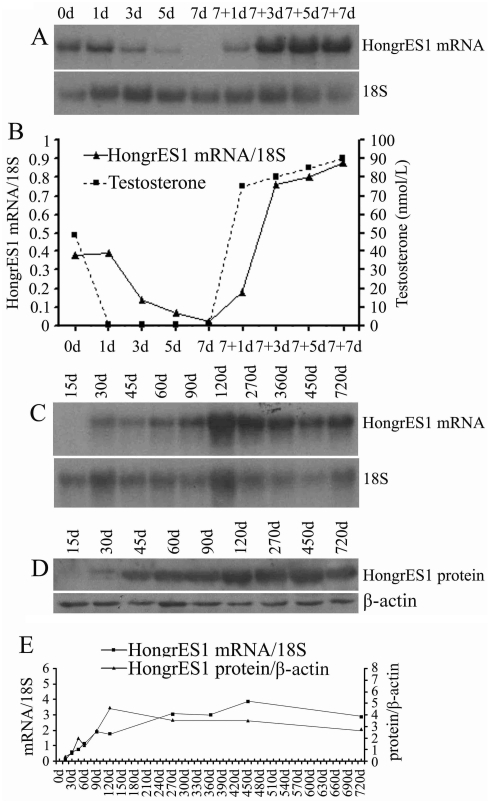Figure 2. Androgen regulation and developmental change of the HongrES1 expression.
(A) Northern blot analysis of adult rat epididymal RNAs from precastration (0 d) and bilateral castration for 1, 3, 5, and 7 days (1 d, 3 d, 5 d, and 7 d) as well as for 1, 3, 5, and 7 days after the initial injection of testosterone propionate applied to the 7 d-castrated rats (7+1 d, 7+3 d, 7+5 d, and 7+7 d). The total RNAs were pooled from four to seven animals at each time-point. (B) The relative expression levels of HongrES1 mRNA (hybridization density of HongrES1 mRNA/18S ribosomal RNA) in the rat cauda epididymis and the serum testosterone level (expressed in nanomoles per liter) during androgen manipulation (n = 4–7). (C) Northern analysis of HongrES1 mRNA and 18S rRNA during development. The samples were collected at 15 d, 30 d, 45 d, 60 d, 90 d, 120 d, 270 d, 360 d, 450 d and 720 d respectively. RNAs were pooled from three animals per group. (D) Western blot analysis of HongrES1 and β–actin proteins during development. The samples were collected at 15 d, 30 d, 45 d, 60 d, 90 d, 120 d, 270 d, 450 d and 720 d respectively. The total proteins were pooled from three animals each group. (E) The relative amounts of HongrES1 mRNA (hybridization density of HongrES1 mRNA/18S ribosomal RNA) and protein (immunoreactivity density of HongrES1 protein/β–actin protein) in the rat epididymis at different developmental stages (n = 3).

